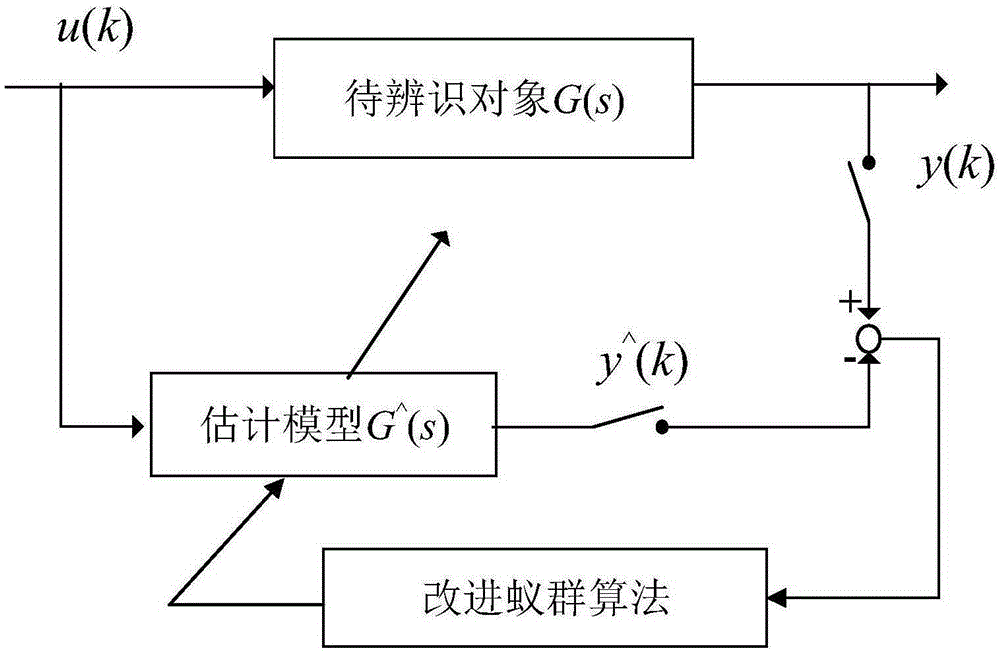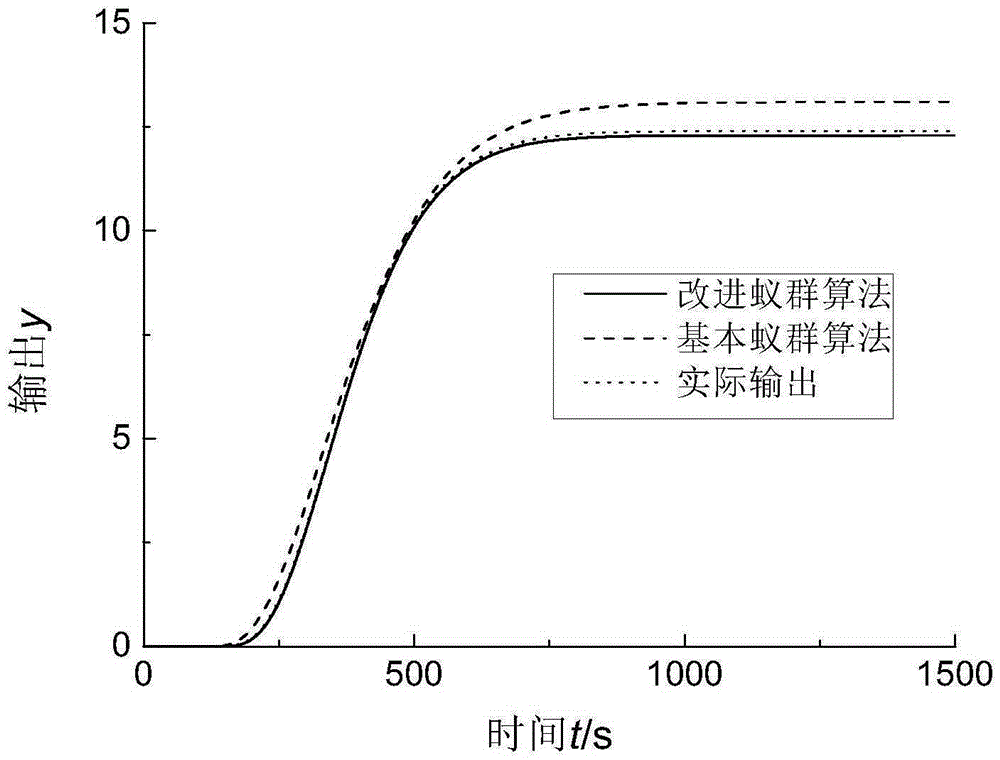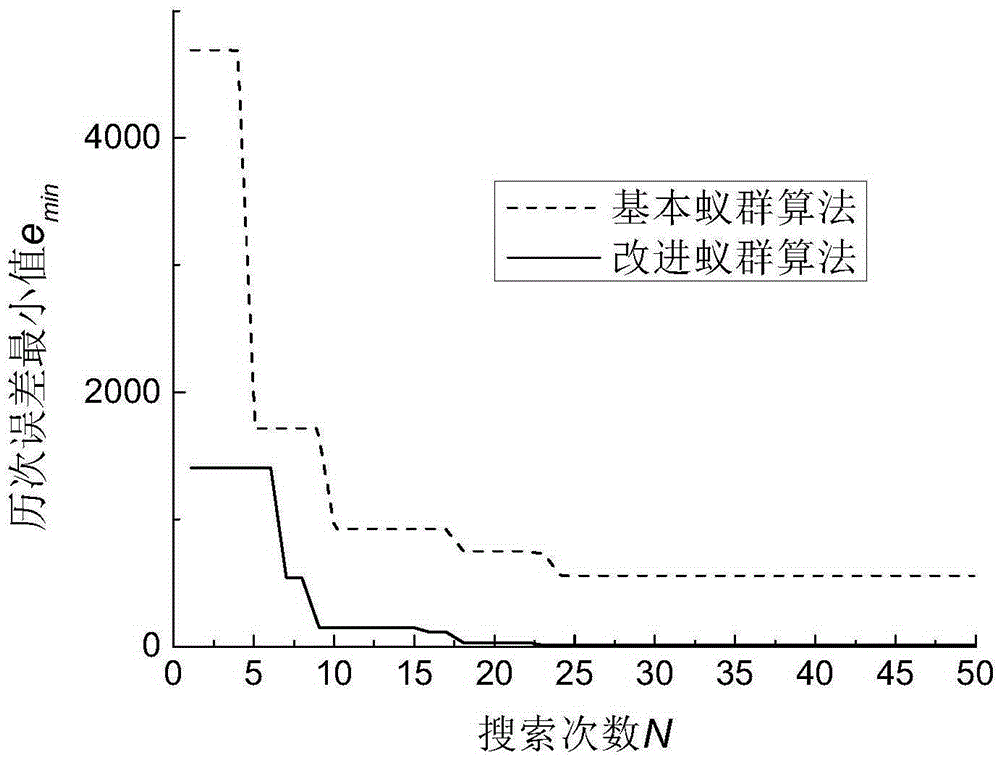Thermal process model parameter identification method adopting improved ant colony algorithm
A process model and parameter identification technology, applied in the field of thermal process model parameter identification, can solve problems such as poor versatility, dependence on calculation accuracy, and difficulty in application
- Summary
- Abstract
- Description
- Claims
- Application Information
AI Technical Summary
Problems solved by technology
Method used
Image
Examples
Embodiment 1
[0071] The thermal process model was identified on MATLAB, and compared with the parameter identification results using the basic ant colony algorithm. The structural thermal process model is as follows:
[0072] G ( s ) = 12.3 ( 1 + 54.3 s ) 5 e - 123 s - - - ( 7 )
[0073] Select m=30, α=1.1, ρ=0.1, the number of iterations is 50, use e(n) to record the minimum value of the identification error for each iteration, and the algorithm will stop executing when the number of iterations reaches 50 or e(n) is equal to 0. The selection range of model parameters is: K ∈ (-29.9, 29.9), ...
Embodiment 2
[0081] Figure 5 When the 300MW circulating fluidized bed boiler operates between 200MW-250MW load, keep other input volumes unchanged, and increase the primary air volume by 16km 3 / h, the effect curve on bed pressure. It can be seen that when the primary air volume increases, the bed pressure drops rapidly, and the entire drop process takes about 60s.
[0082] Set parameters m=30, α=1.1, ρ=0.1, and the number of iterations is 50. The selection range of model parameters is: K ∈ (-0.499, 0), T ∈ (0, 49.9), n ∈ (1, 5). The transfer function model identified by the basic ant colony algorithm is:
[0083] G ( s ) = - 0.096 ( 1 + 19 s ) 3 - - - ( 10 ) ...
PUM
 Login to View More
Login to View More Abstract
Description
Claims
Application Information
 Login to View More
Login to View More - R&D
- Intellectual Property
- Life Sciences
- Materials
- Tech Scout
- Unparalleled Data Quality
- Higher Quality Content
- 60% Fewer Hallucinations
Browse by: Latest US Patents, China's latest patents, Technical Efficacy Thesaurus, Application Domain, Technology Topic, Popular Technical Reports.
© 2025 PatSnap. All rights reserved.Legal|Privacy policy|Modern Slavery Act Transparency Statement|Sitemap|About US| Contact US: help@patsnap.com



